Slide #2
Can you talk a little bit more about what 112 Greene Street was back in those years?
It’s essential to understand the context of New York City at that time. SoHo began as the manufacturing base for the city and when all those companies and businesses began to vacate the area in the 1960s to find cheaper rents elsewhere, they left behind these enormous, huge, beautiful factory buildings and no one to fill them. Then, in the mid to late 1960s, the local government changed the tax codes so they could be used by individuals as live/work spaces. Eventually a tax incentive was created for artists to move there, in the attempt to populate the area that was rapidly becoming deserted. So artists began moving there by the late 1960s and early 1970s because it was cheap and the large spaces were amazing for studios and to show work and hold performances. There were two commercial galleries that opened there in the late 1960’s—Paula Cooper and OK Harris—but not much else. Holly Solomon ran 98 Greene Street Loft, which opened in 1969, but while artists were living and working there, there weren't a lot of ways for them to show what they were working on.
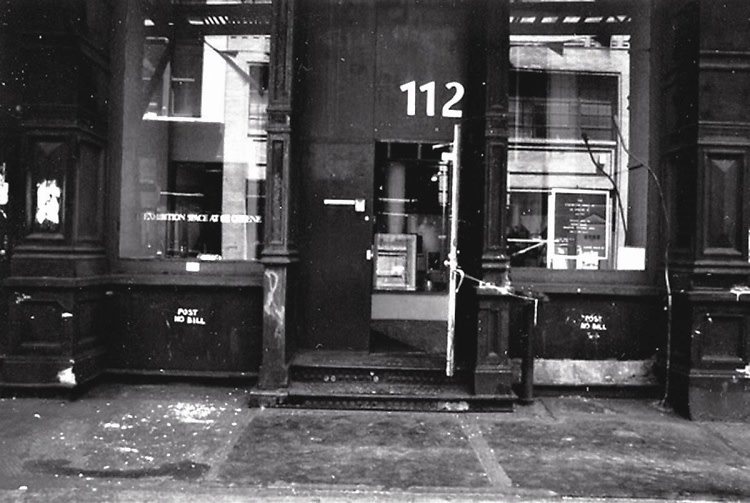 112 Greene Street was opened by Jeffrey Lew in 1970. He had bought the building in 1968 with his wife Rachel; it was still a rag picking factory then and they started renting out the upper floors to different artist friends of theirs. When the business moved out, they had an empty ground floor and basement to their disposal. Jeffrey, who was also an artist, started using it himself and invited other artists to use it as well. He became friends with Alan Saret, a great artist with a loft on Spring Street that he called Spring Palace, and Saret really pioneered the idea of an artist’s studio as a live/work/exhibition space. This was quite a new phenomenon at the time: rather than relying on galleries to exhibit his works, Saret had a strong belief that it should all be one: that where an artist lived and worked should not be separate from where his works were exhibited. And Jeffrey Lew also met Gordon Matta-Clark at this time, and Gordon and Alan came on board from the beginning to help Jeffrey create 112 Greene Street.
Jeffrey started to become less and less involved after 1974-75. In order to continue to run the space, it was necessary to secure funding, and 112 Greene Street began receiving government grants. In the exhibition and the book I’ve singled out the early years of 112 Greene Street , because the role this venue played is most clearly appreciated during this period. There was a core group of artists then who ran the space together, and it is fascinating to look at what they produced in those years, and to look at their relationships to the broader community. The atmosphere and environment during these early years were different than in the final years of the decade. People put a lot of emphasis on the idea of sustainability, but for a space like this, it was really there in the moment and served the needs of the moment. It didn't have to last forever; it shouldn't have lasted forever. And I think that's an important thing to understand in the general history of these kinds of spaces. It doesn't mean that what is there at a certain moment has to stay that way for years to come. Everything changes, everything evolves. And this particular space, at this particular moment, is fascinating, instructive, and inspiring to look at.
What was the space like?
The interior was unique: it was not a pristine “white cube,” but a rough space. The floors were all chopped up, the walls had holes and cracks, but it was perfect for the artists and the postminimal outlook at the time. A lot of the installation-based works exhibited at the venue were ephemeral. They weren't really created to be sold and carted off. They were created to exist in the moment for whatever the duration of the show was, and then disassembled or destroyed. So artists were able to create works in this space that were true to their practice, but that they couldn't do anywhere else.
[Photo via]
112 Greene Street was opened by Jeffrey Lew in 1970. He had bought the building in 1968 with his wife Rachel; it was still a rag picking factory then and they started renting out the upper floors to different artist friends of theirs. When the business moved out, they had an empty ground floor and basement to their disposal. Jeffrey, who was also an artist, started using it himself and invited other artists to use it as well. He became friends with Alan Saret, a great artist with a loft on Spring Street that he called Spring Palace, and Saret really pioneered the idea of an artist’s studio as a live/work/exhibition space. This was quite a new phenomenon at the time: rather than relying on galleries to exhibit his works, Saret had a strong belief that it should all be one: that where an artist lived and worked should not be separate from where his works were exhibited. And Jeffrey Lew also met Gordon Matta-Clark at this time, and Gordon and Alan came on board from the beginning to help Jeffrey create 112 Greene Street.
Jeffrey started to become less and less involved after 1974-75. In order to continue to run the space, it was necessary to secure funding, and 112 Greene Street began receiving government grants. In the exhibition and the book I’ve singled out the early years of 112 Greene Street , because the role this venue played is most clearly appreciated during this period. There was a core group of artists then who ran the space together, and it is fascinating to look at what they produced in those years, and to look at their relationships to the broader community. The atmosphere and environment during these early years were different than in the final years of the decade. People put a lot of emphasis on the idea of sustainability, but for a space like this, it was really there in the moment and served the needs of the moment. It didn't have to last forever; it shouldn't have lasted forever. And I think that's an important thing to understand in the general history of these kinds of spaces. It doesn't mean that what is there at a certain moment has to stay that way for years to come. Everything changes, everything evolves. And this particular space, at this particular moment, is fascinating, instructive, and inspiring to look at.
What was the space like?
The interior was unique: it was not a pristine “white cube,” but a rough space. The floors were all chopped up, the walls had holes and cracks, but it was perfect for the artists and the postminimal outlook at the time. A lot of the installation-based works exhibited at the venue were ephemeral. They weren't really created to be sold and carted off. They were created to exist in the moment for whatever the duration of the show was, and then disassembled or destroyed. So artists were able to create works in this space that were true to their practice, but that they couldn't do anywhere else.
[Photo via]
 112 Greene Street was opened by Jeffrey Lew in 1970. He had bought the building in 1968 with his wife Rachel; it was still a rag picking factory then and they started renting out the upper floors to different artist friends of theirs. When the business moved out, they had an empty ground floor and basement to their disposal. Jeffrey, who was also an artist, started using it himself and invited other artists to use it as well. He became friends with Alan Saret, a great artist with a loft on Spring Street that he called Spring Palace, and Saret really pioneered the idea of an artist’s studio as a live/work/exhibition space. This was quite a new phenomenon at the time: rather than relying on galleries to exhibit his works, Saret had a strong belief that it should all be one: that where an artist lived and worked should not be separate from where his works were exhibited. And Jeffrey Lew also met Gordon Matta-Clark at this time, and Gordon and Alan came on board from the beginning to help Jeffrey create 112 Greene Street.
Jeffrey started to become less and less involved after 1974-75. In order to continue to run the space, it was necessary to secure funding, and 112 Greene Street began receiving government grants. In the exhibition and the book I’ve singled out the early years of 112 Greene Street , because the role this venue played is most clearly appreciated during this period. There was a core group of artists then who ran the space together, and it is fascinating to look at what they produced in those years, and to look at their relationships to the broader community. The atmosphere and environment during these early years were different than in the final years of the decade. People put a lot of emphasis on the idea of sustainability, but for a space like this, it was really there in the moment and served the needs of the moment. It didn't have to last forever; it shouldn't have lasted forever. And I think that's an important thing to understand in the general history of these kinds of spaces. It doesn't mean that what is there at a certain moment has to stay that way for years to come. Everything changes, everything evolves. And this particular space, at this particular moment, is fascinating, instructive, and inspiring to look at.
What was the space like?
The interior was unique: it was not a pristine “white cube,” but a rough space. The floors were all chopped up, the walls had holes and cracks, but it was perfect for the artists and the postminimal outlook at the time. A lot of the installation-based works exhibited at the venue were ephemeral. They weren't really created to be sold and carted off. They were created to exist in the moment for whatever the duration of the show was, and then disassembled or destroyed. So artists were able to create works in this space that were true to their practice, but that they couldn't do anywhere else.
[Photo via]
112 Greene Street was opened by Jeffrey Lew in 1970. He had bought the building in 1968 with his wife Rachel; it was still a rag picking factory then and they started renting out the upper floors to different artist friends of theirs. When the business moved out, they had an empty ground floor and basement to their disposal. Jeffrey, who was also an artist, started using it himself and invited other artists to use it as well. He became friends with Alan Saret, a great artist with a loft on Spring Street that he called Spring Palace, and Saret really pioneered the idea of an artist’s studio as a live/work/exhibition space. This was quite a new phenomenon at the time: rather than relying on galleries to exhibit his works, Saret had a strong belief that it should all be one: that where an artist lived and worked should not be separate from where his works were exhibited. And Jeffrey Lew also met Gordon Matta-Clark at this time, and Gordon and Alan came on board from the beginning to help Jeffrey create 112 Greene Street.
Jeffrey started to become less and less involved after 1974-75. In order to continue to run the space, it was necessary to secure funding, and 112 Greene Street began receiving government grants. In the exhibition and the book I’ve singled out the early years of 112 Greene Street , because the role this venue played is most clearly appreciated during this period. There was a core group of artists then who ran the space together, and it is fascinating to look at what they produced in those years, and to look at their relationships to the broader community. The atmosphere and environment during these early years were different than in the final years of the decade. People put a lot of emphasis on the idea of sustainability, but for a space like this, it was really there in the moment and served the needs of the moment. It didn't have to last forever; it shouldn't have lasted forever. And I think that's an important thing to understand in the general history of these kinds of spaces. It doesn't mean that what is there at a certain moment has to stay that way for years to come. Everything changes, everything evolves. And this particular space, at this particular moment, is fascinating, instructive, and inspiring to look at.
What was the space like?
The interior was unique: it was not a pristine “white cube,” but a rough space. The floors were all chopped up, the walls had holes and cracks, but it was perfect for the artists and the postminimal outlook at the time. A lot of the installation-based works exhibited at the venue were ephemeral. They weren't really created to be sold and carted off. They were created to exist in the moment for whatever the duration of the show was, and then disassembled or destroyed. So artists were able to create works in this space that were true to their practice, but that they couldn't do anywhere else.
[Photo via]
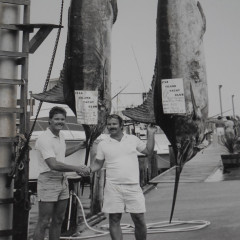
.jpg)
.jpg)
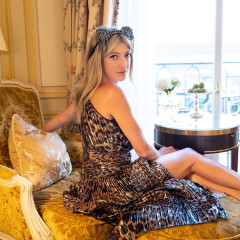
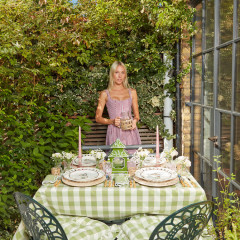
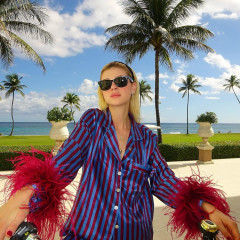
.jpg)
.jpg)
.jpg)
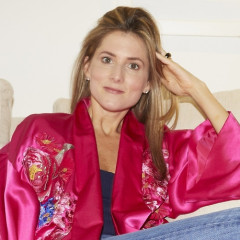
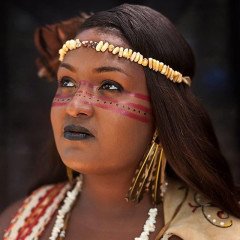

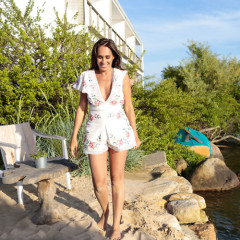
.jpg)